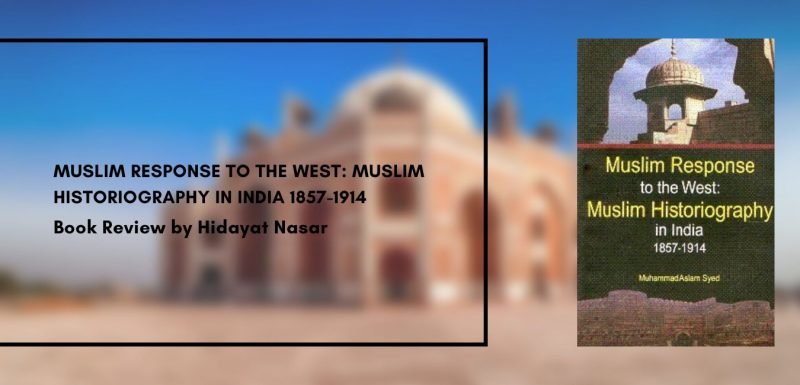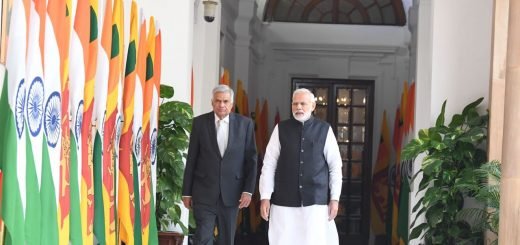[Book Review] Muslim response to the West: Muslim Historiography in India 1857-1914

The book “Muslim response to the West: Muslim Historiography in India 1857-1914” is written by Muhammad Aslam Syed. This book is a mesmerizing contribution to the subject of history and Muslim historiography in India. The author has done a tremendous job in identifying the loopholes and grey areas that have been hindering the process of History writing and producing literature. The author has adopted the modus operandi of distributing the periods and school of thought into sections and categories which helps the reader to grab the main theme and idea easily. The Indian subcontinent fell prey to the nefarious designs of colonial masters due to the callous, fragile and incompetent policies of Mughal emperors. The challenges that followed after the British subjugation were enormous. The British went a step ahead and annexed almost all of the Indian subcontinent, thus paving the way for the infamous war of independence or sometimes quoted as sepoy mutiny. Post-1857 India saw the emergence of three dominant political and religious schools of thought that were the traditionalists, the modernists and the New school. The traditionalists were of the view that in order to regain the lost glory, the Muslims needed to consult the word of GOD, the practices of the Holy Prophet and the four imams that are experts of Hadith. The modernists marshalled by People like Sir Syed Ahmed khan believed that rationality, logic and attaining western education were some of the tools that can help the Muslims to escape the quagmire. Those at the helm of the New school, however, thought that of bringing a change through poetry, and western education but they also had the tendencies of the modernist school of thought in their orientation.
The book has both positive and negative aspects in it. The first-ever positive aspect of the book is that the author has used an unbiased approach to analyze the facts and figures. The examples and historical evidence given by the author are deponent of the fact that he has a thorough knowledge of the subject. For example, he has given examples of western Writers like Gibbon, elphinstone and spenger in order to cement his argument.
Secondly, the strength of this book lies in the fact that the author has “build a bridge over the bridge” in illustrating upon different aspects of Muslim historiography from 1867-1914. The reader gets an absolute idea of the past and how history was written in a time when Muslims were divided into three distinctive schools based on their understanding of history. This reminds me of a quotation which goes like this, “to be ignorant of what happened before you were born is to always remain a child”.
Additionally, the author has done a scintillating job in dispensing the ideologies and politico-religious orientation of different scholars of the three schools of thought. From the traditionalists to the modernists and the new school, the author has rationally and analytically evaluated the aura of different scholars from the three schools of thought and has also shed light on their contributions to the cause of history writing.

Moreover, the author has used simple and limpid vocabulary and terminologies that are easy to understand. The exquisiteness with which the sources are cited as the proof adds charm to the work and is the hieroglyph of a rational Brain. The author has epitomized this work by adding the relevant course of historiography and has drawn the conclusions while keeping in mind the works of both western Historians, British administrator historians and medieval Muslim historians.
While the debate throughout the book is about the three distinctive schools of thought that are influential in inculcating their ideological orientation in the minds of masses, the author has remained unbiased and has adopted a rational and logical approach and has denounced the biased version of History writing. From the nascent stage of Muslim historiography to its productive period and explaining the distinctive orientations, the author has relied upon empirical data and has analyzed the state of affairs without an iota of Prejudice. For instance, he has lambasted all the key scholars of the three schools of thought for their callousness in their relevant fields, which is a manifestation of rationality.
The weak point of the book is that the author at times jumps to another point while explaining something important. This leaves the reader isolated from the point which was in the discussion thus provoking a sense of alienation. Due to this the reader also loses interest to continue with the same topic and also faces the issue of grabbing a certain point.
Moreover, the author throughout this book coveys the caricature that history writing in the Indian subcontinent developed in isolation from 1857 till 1914. He modestly omits the role of foreign invaders, travellers, Persians, Arabs etc. it is an undeniable and indisputable truth that parts of Asia and Africa remained colonies of Europe but how is it possible that Muslim historiography got no influence worthy of mentioning?
Suggestions and Recommendations:
The book is undoubtedly worth praising work by Syed Muhammad Aslam. The students of history with less knowledge of Muslim historiography are highly recommended to go through this concise and comprehensive work of “Syed Muhammad Aslam”. This will enact a sense of historical consciousness, academic values and how history was written in a time when the Muslims of India were under British control.


















